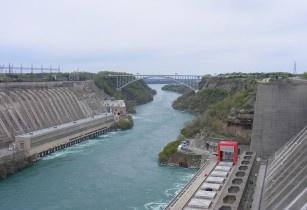Rwanda has set a target to produce 563MW of power by 2017 by tapping into hydro, peat, methane, solar and geothermal power resources, and is seeking investors for projects
According to the Energy Water and Sanitation Authority (EWSA), the expansion will require an investment of US$1bn to reduce the country’s energy deficits, as only 17 per cent of the population has access to power.
EWSA said power generation will comprise 200MW from peat, 100MW from methane, 63MW from hydro, 90MW from geothermal and 18.5MW from solar.
Rwanda relies on thermal energy sources, especially diesel and heavy fuel, to provide 40 per cent of the installed 110MW. Hydropower generates 59 per cent of the country's power, while one per cent comes from methane gas. The country imports 14.5MW of power.
According to the African Development Bank (AfDB), 40 per cent of Rwanda’s currency earnings go into petroleum products, highlighting the need for the country to seek better and cheaper ways of generating power.
The World Bank said that high costs of power in Rwanda, estimated at US$0.22/KWh compared to US$0.08-0.10/KWh in the rest of the region, is cause for concern among local investors.
Rwanda has an estimated 155mn cubic metres (cu m) of peat reserves and the country has increased the capacity of peat production to take advantage of these reserves.
Peat Energy Company said it plans to seek investors to raise capital needed for its growth. With an installed capacity of 20,000 tonnes, the company currently produces 13,000 tonnes even as demand for power rises. Recently, the company also signed a US$13.3mn contract to supply solid fuel over a five-year period to Cimerwa Cement factory in the country.
Pierre Kalinganire, CEO of Peat Energy Company, said, “We are interested in getting new investors as the company expands. The value of the company should be in the market by April or May.”
EWSA has commissioned the construction of a US$36mn peat-powered plant, which is expected to add 15MW to the national grid by 2015. Turkish company Hakam Mining and Generation Industry and Trade has also signed a deal with the government to develop a 120MW peat and electricity generating plant worth US$365mn at South Akanyaru in Gisagara district.
In hydropower generation, the government expects to add 87MW of power to the national grid by 2014, with 28MW set to come from Nyabarongo hydropower plant; 2.2MW from Rukarara II hydropower plant; 4MW from Giciye hydropower plant; and an additional four megawatts from six micro-hydropower plants.
Rwanda has also signed a US$340mn deal with the World Bank for the construction of the 80MW Rusumo hydropower project, which is also expected to serve Tanzania and Burundi.
Methane is another source of energy, with 25MW to be delivered from the Kivuwatt methane project and 8.5 MW from Gigawatt Global Solar Plant.
Officials have reportedly said the country has a geothermal potential of 320MW and plans are underway to add 60MW to the national grid by 2017.
The districts of Nyabihu, Gisenyi, Rubavu, Musanze, Bugarama and Rusizi show potential for geothermal power generation, industry sources said.
The Chinese government recently donated US$640,000 worth of solar equipment to Rwanda, which will be installed in 416 households in rural areas across the country.
Rwanda is also expected to invest in regional inter-connection projects such as the 220KV power lines with neighbours Tanzania, Uganda and Burundi.
Mwangi Mumero





















